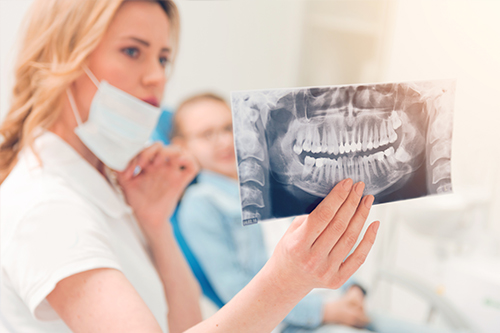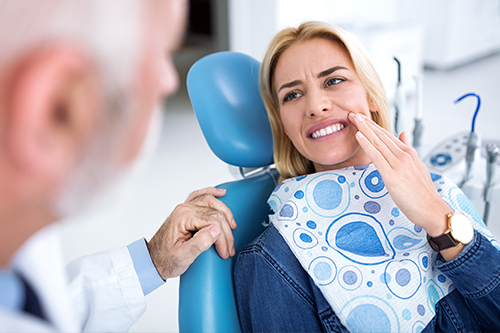When Every Minute Matters: How to Recognize a Dental Emergency
Dental emergencies come in many forms, and knowing how to spot one quickly can make a meaningful difference in outcomes. Pain that is sharp, spreading, or accompanied by swelling or fever often signals a problem that needs prompt attention. Likewise, any traumatic injury that results in a knocked-out, loose, or visibly fractured tooth should be treated as urgent rather than something to wait out.
Not all alarming symptoms are dramatic—persistent throbbing, a new lump or sore that doesn’t improve, or sudden changes in biting or jaw movement also merit evaluation. Early recognition reduces the risk that a manageable issue becomes a more complex problem. When in doubt, err on the side of caution and seek professional assessment.
Our approach emphasizes clear guidance so patients and caregivers can act decisively. Understanding what constitutes an emergency helps you prioritize care and preserve oral health. The sooner a clinician can evaluate the situation, the better the chances of saving tissue, relieving pain, and preventing complications.
Practical First Steps to Control Pain and Protect Teeth
Immediate actions taken at home can reduce discomfort and minimize further damage while you arrange for professional care. For displaced teeth, gently repositioning a partially dislodged tooth and keeping a knocked-out tooth moist can improve the odds of successful re-implantation. Cold compresses applied to the outside of the cheek can reduce swelling after trauma, while over-the-counter pain relievers taken as directed can provide temporary relief.
There are a few important precautions to remember: avoid placing pain-relieving gels or medications directly into deep wounds, don’t attempt to push a fractured tooth back into position if movement causes severe pain, and don’t ignore persistent bleeding. For soft-tissue injuries inside the mouth, rinsing gently with warm salt water and applying light pressure to control bleeding are often helpful first measures.
These measures are stabilizing rather than curative. They buy critical time and help reduce the risk of infection or further tissue loss before you receive definitive care. When pain is severe, swelling is rapidly increasing, or you experience systemic symptoms such as fever, arrange for an urgent evaluation as soon as possible.
How We Assess and Prioritize Urgent Dental Problems
When you arrive for emergency treatment, the clinical team focuses on a rapid, systematic assessment to determine the source and severity of the problem. A careful history and clinical exam identify immediate threats to health—such as spreading infection, uncontrolled bleeding, or airway compromise—and help us prioritize care. Diagnostic imaging, when appropriate, provides additional detail about fractures, root position, and hidden pathology.
Our goal during triage is to stabilize patients safely and outline a clear treatment plan that balances speed with sound clinical judgment. Pain control and infection management are often the first priorities, followed by procedures to preserve teeth or soft tissues whenever feasible. We communicate the plan in straightforward terms so patients understand what to expect at each step.
Coordination of care is essential when complex problems require collaboration with specialists. In such situations, we arrange timely referrals or work alongside oral surgeons, endodontists, or other experts to ensure you receive the most appropriate, evidence-based care for your needs.
Treatment Options: Saving Teeth, Controlling Infection, Restoring Function
Treatment for dental emergencies ranges from conservative to restorative, and the chosen approach depends on the nature and extent of the injury or infection. Minor fractures and lost fillings can often be addressed with bonding or a replacement restoration to restore the tooth’s form and function. When the tooth’s nerve is involved, root canal therapy is a common and reliable option to relieve pain and retain the natural tooth.
Infections are treated promptly to prevent spread—therapy may include drainage of an abscess, prescription of appropriate antimicrobial agents when indicated, and definitive dental work to eliminate the source. When a tooth is severely damaged or cannot be preserved, extraction may be the safest route to protect overall oral health, followed by a discussion of restorative options to replace the missing tooth at an appropriate time.
Modern restorative choices provide predictable ways to rebuild chewing function and appearance. From fixed bridges to implant-supported restorations and removable prosthetics, options are selected based on clinical needs, long-term prognosis, and preserving neighboring teeth and tissues. The practice emphasizes techniques that are durable, comfortable, and aligned with patients’ functional and aesthetic goals.
Recovery, Follow-Up, and Preventing Future Emergencies
After urgent treatment, recovery care focuses on pain management, infection control, and stepwise restoration of oral function. Post-treatment instructions cover wound care, dietary recommendations, oral hygiene adjustments, and signs that warrant an earlier return for re-evaluation. Scheduled follow-up visits allow the clinical team to monitor healing and determine whether additional dental work is needed to restore a tooth’s strength and appearance.
Education plays a key role in preventing future emergencies. We review protective measures such as custom night guards for patients who grind their teeth, mouthguards for contact sports, and strategies to manage chronic conditions that predispose to acute events. Addressing small problems early—through routine exams and timely restorations—reduces the likelihood of larger, urgent issues later on.
Mercer Island Dental Associates is committed to offering swift, thoughtful emergency care when patients need it most. Our emphasis on prompt assessment, evidence-based treatment, and structured follow-up helps patients regain comfort and function while minimizing long-term consequences. If you have questions about emergency care or need guidance after an oral injury, please contact us for more information.





